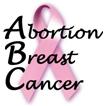Brind Letter
Induced abortion and breast cancer risk
By Joel Brind, Ph.D.,
In a recent case-control study in this journal 1, Mahue-Giangreco et al. report no increased risk of breast cancer for women with a history of induced abortion (multivariate OR = 1.05, 95% CI: 0.75-1.48, and OR = 0.69, 95% CI: 0.46-1.04 for parous and nulliparous women, respectively). In putting their results in the context of the extant literature, the authors emphasize what they considered to be "controversial results". They remark: "Some studies reflect an increase in risk associated with induced abortion, whereas others report no increase in risk".
However, as we pointed out in our 1996 review 2, the record is far more consistent. In studies on American women, that of Mahue-Giangreco et al. is actually only the third out of 16 which does not report a positive association between induced abortion and breast cancer. In fact, 8 of the other 15 reported a positive association at least on the border of statistical significance. None has reported a significant negative association 2.
It is therefore reasonable to ask why the study of Mahue-Giangreco et al. differs from most other studies on American women. The answer may lie in another characteristic which sets the Mahue-Giangreco study apart from all the others, that is, the low participation rate of eligible patients. The authors report a patient participation rate of 76.8%, which is lower than most. But importantly, fully 11.5% of eligible patients were not included because of "patient refusal". This is the highest patient refusal rate of any study reporting on induced abortion and breast cancer. This high rate of patient refusal may reflect the sensitive personal nature of induced abortion, and the consequent reluctance of women to report it. It has been argued that response bias, in particular, a greater tendency to underreport abortions among controls compared to patients, could explain the consistent finding of a positive association 3. However, solid evidence of such response bias has never been reported. On the contrary, the lack of such bias in abortion-breast cancer research has been repeatedly demonstrated 4 5 6.
It seems more reasonable to suggest that women who are reluctant to disclose a history of induced abortion would be more likely to opt out of a study in the first place, rather than agree to provide sensitive information and then withhold it. In the Mahue-Giangreco study, the eligible patients constituted a fixed pool (N = 969). Therefore, the prevalence of induced abortion among the resulting participating patient population (N = 744) is likely to be underestimated since the refusal rate is so high. The control group, however, is not nearly as sensitive to such error, because the pool of eligible controls is open-ended. Specifically, eligible controls were identified and recruited through a predefined neighborhood walk. Any eligible controls who refused to participate were simply replaced by recruiting others from the neighborhood. Therefore, if abortion-positive patients were substantially over-represented in the large group of patients refusing to participate, the OR might be substantially underestimated due to the resulting selection bias. Were this the case, one would also expect that the overall prevalence of induced abortion among patients in the study would be lower than expected.
In their discussion, Mahue-Giangreco report that the overall prevalence of induced abortion among their cases "is consistent with" that of Daling et al. 5 (Mahue-Giangreco et al. report theirs as 25.8%, compared to 24.9% for Daling et al., although the correct figures are actually 30.7% and 30.5%, respectively.) Since the women in the Daling et al. study were within the same age range, and the two studies were "conducted within approximately the same time frame", Mahue-Giangreco conclude that a similar prevalence of induced abortion should be expected. In fact, they also note, as a discrepancy, that the prevalence of induced abortion among their own controls is approximately 30% higher than that among the Daling et al. controls.
However, Mahue-Giangreco did not take into consideration an important demographic difference between the California women they studied, and the women of Washington state, whom Daling et al. 5 studied. In fact, during the period 1973-1983, when most of the induced abortions in both studies took place, the average induced abortion rate was 32% higher in California than in Washington 7. Hence, the 30% higher prevalence of induced abortion among the controls in the Mahue-Giangreco study v. the Daling study, is not discrepant, but rather, to be expected. On the other hand, the approximately equal prevalence among the patients of the two studies actually suggests that the prevalence among the California patients was underestimated, and should have been approximately 30% higher. In absolute numbers, the expected number of patients in the Mahue-Giangreco study should thus be approximately 250, instead of the observed 192. This difference would have raised the observed overall OR to approximately 1.2, and it could easily have occurred in the context of the 111 patients who refused to participate. An overall OR of 1.2 would be in line with the typical observation of a weak positive association between induced abortion and breast cancer.
Joel Brind, Ph.D., President,
Breast Cancer Prevention Institute
9 Vassar Street
Poughkeepsie, NY 12601 USA
- 1. Mahue-Giangreco, M., Ursin, G., Sullivan-Halley, J., and Bernstein, L. Induced abortion, miscarriage, and breast cancer risk of young women. Cancer Epidemiol., Biomark. Prev., 12: 209-14, 2003.
- 2. a. b. Brind, J., Chinchilli, V. M., Severs, W. B., and Summy-Long, J. Induced abortion as an independent risk factor for breast cancer: a comprehensive review and meta-analysis. J. Epidemiol. Community Health, 50: 481-496, 1996.
- 3. Lindefors-Harris, B-M., Eklund, G., Adami, H-O., and Meirik, O. Response bias in a case-control study: analysis utilizing comparative data concerning legal abortions from two independent Swedish studies. Am. J. Epidemiol., 134: 1003-8, 1991.
- 4. Howe, H. L., Senie, R. T., Bzduch, H., and Herzfeld, P. Early abortion and breast cancer risk among women under age 40. Int J Epidemiol., 18: 300-304, 1989.
- 5. a. b. c. Daling, J. R., Malone, K. E., Voigt, L. F., White, E., and Weiss, N. S. Risk of breast cancer among young women: relationship to induced abortion. J Natl Cancer Inst 86: 1584-1592, 1994.
- 6. Tang, M-T. C., Weiss, N. S., Daling, J. R., and Malone, K. E. Case-control differences in the reliability of reporting a history of induced abortion. Am. J. Epidemiol., 151: 1139-1143, 2000.
- 7. State-by-state trends in abortion in the United States. The Alan Guttmacher Institute. www.guttmacher.org/sections/abortion.html, 2003


